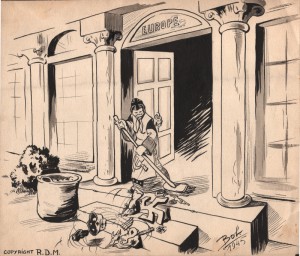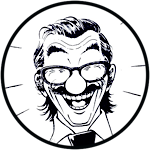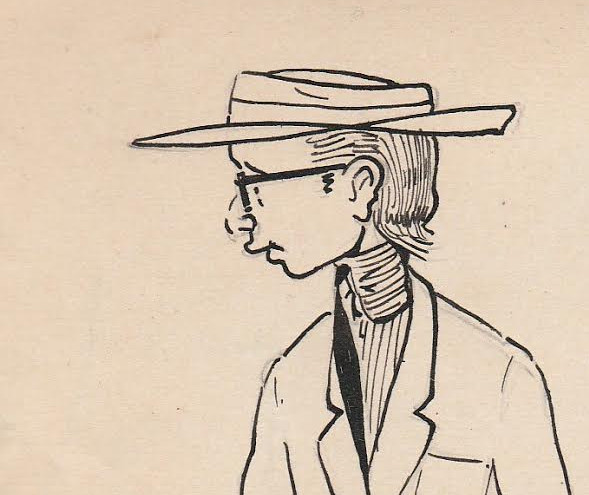When World War 2 ends in Europe in 1945 with the German surrender to the Western Allies and the Soviet Union in late April and early May 1945, Bob De Moor was probably among the first ones to celebrate this. For years he had been waiting for the allies to liberate Europe and in the final months he had also been a victim of the retaliation attacks of Nazi-Germany on Antwerp with their doodlebugs (aka V-1 and V-2 – the V stood for ‘Vergeltungswaffe‘ in German, ‘retaliation arm’ in English) in which he lost two fingers and suffered further injuries on his legs. In short, it was time that the war ended.

And what better way to celebrate the end of World War 2 than with some cartoons?
Today we present you one of the cartoons he made during that time. The one we see here is called “Le grand nettoyage” (the big cleaning). We found the cartoon in the archives of Ludo Van Looveren and it’s our guess that the title was given by John Van Looveren, the father of Ludo and brother-in-law of Bob De Moor. It’s possible that the cartoon ended up in a french written publication though we can’t tell for sure.
Let’s take a closer look. The cartoon shows a woman cleaning a house, called Europe. She is dressed in the American Stars & Stripes, with a Union Jack scarf and the communists symbols of the hammer and sickle from the Russian flag used on her apron. The 3 countries were part of the alliance against Nazi-Germany. The rubbish that is being swept out of the house includes a machine-gun, a German helmet with bullet holes, a big swastika, several medals with swastikas on, insignias, a broken bayonet or saber, a saber hilt, and a Nazi soldier cap which is also shot to pieces. In short, the trio had been cleansing Europe from the Nazis.
The young Bob De Moor signed the drawing as Bob and also added Copyright R.D.M. (which stands for Robert De Moor, his real name). That copyright is again an indication that the drawing was meant for publication.

